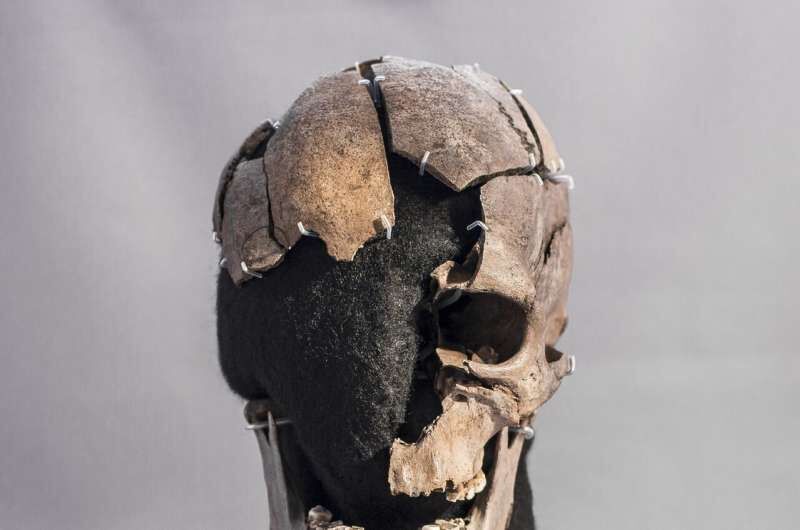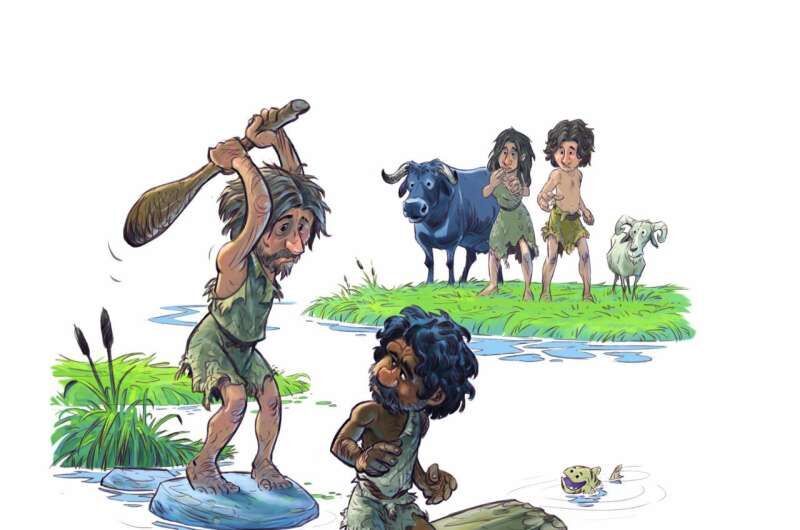
Vittrup Man is the nickname of a Stone Age skeleton recovered from a peat bog in Northwest Denmark, dating to between 3300-3100 BC. The fragmented nature of the remains, including a smashed skull, indicates that he was killed in a ritualistic sacrifice, a common practice in this region at this time.
After a DNA study found Vittrup Man's genetic signature to be distinct from contemporary, local skeletons, Fischer and colleagues were inspired to combine additional evidence to reconstruct the life history of this Stone Age individual at an unprecedented resolution.
Strontium, carbon and oxygen isotopes from Vittrup Man's tooth enamel indicate a childhood spent along the coast of the Scandinavian Peninsula. Corroborating this, genetic analysis found a close relationship between Vittrup Man and Mesolithic people from Norway and Sweden. Additional isotope and protein analysis of the teeth and bones indicate a shift in diet from coastal food (marine mammals and fish) in early life to farm food (including sheep or goat) in later life, a transition that happened in the later teen years.
Comment: Curiously, the original title categorised Vittrup man as 'forager to farmer', however would one really consider a diet of marine mammals and fish 'foraging'?
One imagines this odd descriptor is ideological, as it occurs alongside a raft of other studies claiming most ancient humans primarily ate 'roots and tubers', when the evidence shows quite the contrary: Scandinavian Stone Age society more reliant on fishing than previously thought - particularly aquatic mammals

Comment: A clue? Stone Age hunter-gatherers' diet may have been full of heavy-metals, and during a time of sea level rise
Mysteries remain about Vittrup Man, but this detailed understanding of his geographic and dietary life history provides new insights into interactions between Mesolithic and Neolithic societies in Europe.
The authors add, "To our knowledge, this is the first time that research has been able to map a north European inhabitant's life history in such a high degree of detail and in such high distance of time."
More information: Vittrup Man-The life-history of a genetic foreigner in Neolithic Denmark, PLoS ONE (2024). DOI: 10.1371/journal.pone.0297032
Journal information: PLoS ONE



Comment: It's interesting that during the transitional period of hunter-gatherer to farming that ritual sacrifice was 'common', because a number of researchers have theorised that human sacrifice - and other, stranger practices - became more prominent at times of significant climate shifts and scarcity; and one can imagine that the shift to farming may been, at least in part, an attempt to create secure and reliable ways to obtain of food: